 The holidays always bring a lot of fun, joy, and memories but they can also bring a lot of sugar crashes, mindless eating, and possible setbacks to our health and fitness goals. There are many reasons why trying to be mindful of what we’re eating around the holidays is important. One being energy management – you feel more energized when you take the time to include nutrient dense food alongside your favorite holiday dishes and treats. Second, you’re helping support your health and wellness goals – while enjoying yourself over the holidays is fine, making time to include foods that push us towards our goals and being more mindful of the things that could derail them is very important. Lastly, making sure to include foods with fiber and staying well hydrated will also aid in digestion and blood sugar regulation which are key components of our overall health.
The holidays always bring a lot of fun, joy, and memories but they can also bring a lot of sugar crashes, mindless eating, and possible setbacks to our health and fitness goals. There are many reasons why trying to be mindful of what we’re eating around the holidays is important. One being energy management – you feel more energized when you take the time to include nutrient dense food alongside your favorite holiday dishes and treats. Second, you’re helping support your health and wellness goals – while enjoying yourself over the holidays is fine, making time to include foods that push us towards our goals and being more mindful of the things that could derail them is very important. Lastly, making sure to include foods with fiber and staying well hydrated will also aid in digestion and blood sugar regulation which are key components of our overall health.
Energy Maintenance
This time of year often includes work holiday parties, family gatherings, and many other events that make our schedule busy. Maintaining energy through what you eat can be a big help in not getting slowed down by all the holiday fun. There are a few ways to help make sure you feel great and enjoy yourself. One way to stay energized is to prioritize protein and fiber! Including things like fruit, veggies, nuts, and Greek yogurt or even making the switch to whole grain crackers are great ways to snack and enjoy with your health and fitness goals in mind by providing micronutrients and helping you stay fuller longer. Another way is to have emergency snacks with you – things like protein bars, dried fruit, or string cheese are a great way to prioritize your goals while being busy during the holiday season.
Staying On Track
Mindful, smart snacking is important in not deterring your health and fitness goals. While the actual holidays are typically only one to two days, we all know that the treats and festivities trickle all throughout December. One way to make sure that office holiday party doesn’t create a setback is slow, intentional eating. This allows you to be mindful about not only what you’re consuming but also helps you to take the time to listen to hunger cues that your body gives you. Another tip is to make healthy options seasonal and fun. Holiday fruits like oranges, pomegranates, and apples with cinnamon help make things festive but keep you right on track through New Years.
Overall, Health and Longevity
Your hydration and digestion are a huge component of not only succeeding in your health and fitness goals but in your overall longevity. Prioritizing water/herbal tea at your holiday events is going to keep you feeling well overall but also helps you be more mindful and make better choices once the sweets come out. Practicing portion awareness and fiber will help keep your digestive system regulated and help prevent bloating/inflammation as well. Placing snacks on a napkin or a small plate will help keep you from grazing and feeling sluggish/bloated later and consuming snacks like whole grain crackers, veggies, fruits, and nuts will also help regulate your blood sugar as well.
We all love a treat here and there through the holidays but by prioritizing good options, hydration, and setting ourselves up to have success in the chaos of the season is what will help us to wake up still feeling healthy, energized and moving towards our goals this season

 Pack Portable, Balanced Snacks
Pack Portable, Balanced Snacks
 Vacation is supposed to be fun, enjoyable, and relaxing. When it comes to weight loss attempts or making healthy choices in general, however, traveling can be a challenge. Here are some of our RD’s best tips for healthy eating when traveling or on vacation.
Vacation is supposed to be fun, enjoyable, and relaxing. When it comes to weight loss attempts or making healthy choices in general, however, traveling can be a challenge. Here are some of our RD’s best tips for healthy eating when traveling or on vacation.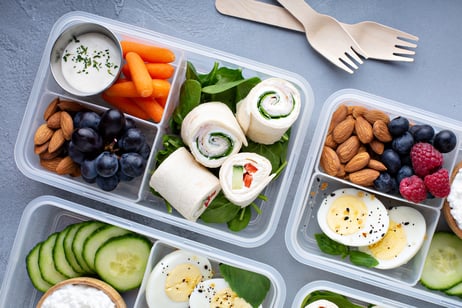

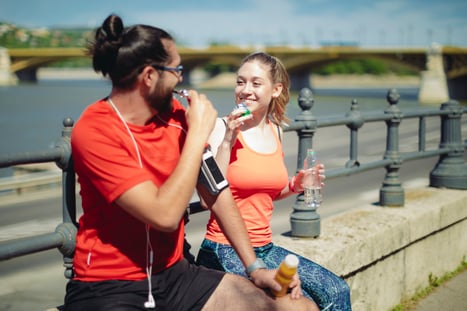 Protein bars make a great snack when you’re short on time or don’t have a big appetite. However, these days there are so many different protein bars available to choose from that picking the right one can be difficult. Some protein bars are relatively healthy; however, many are just fancy candy bars with a lot of sugar and saturated fat, and only a few grams of protein. When picking a protein bar, here are the top five
Protein bars make a great snack when you’re short on time or don’t have a big appetite. However, these days there are so many different protein bars available to choose from that picking the right one can be difficult. Some protein bars are relatively healthy; however, many are just fancy candy bars with a lot of sugar and saturated fat, and only a few grams of protein. When picking a protein bar, here are the top five 
 With the phrase “freshman 15” commonly tossed around, many students enter college with a fear or perception that they will gain weight. However, a
With the phrase “freshman 15” commonly tossed around, many students enter college with a fear or perception that they will gain weight. However, a 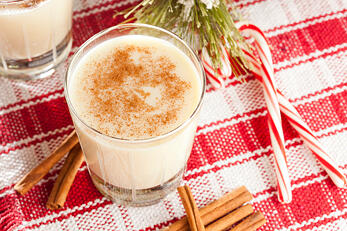
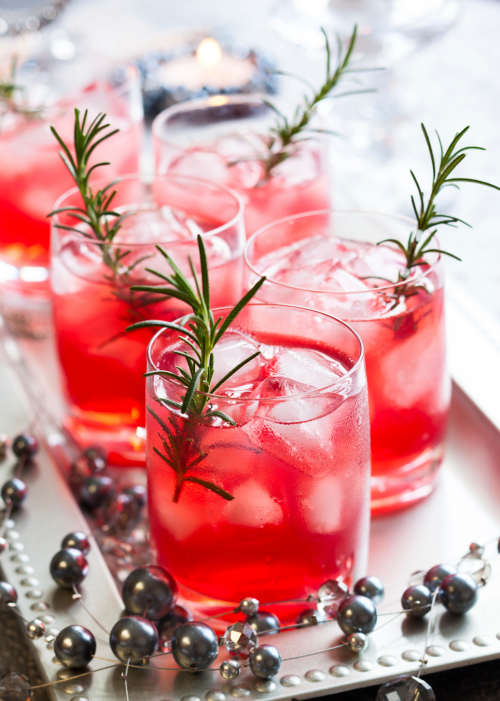

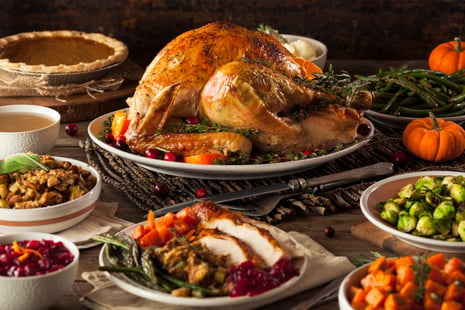 The holidays are HERE! We all know what happens around the holidays. I see two extremes in my practice as a Registered Dietitian:
The holidays are HERE! We all know what happens around the holidays. I see two extremes in my practice as a Registered Dietitian: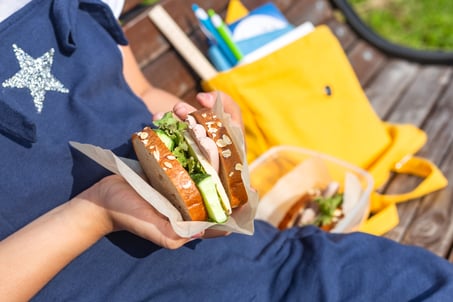 As many of us are confronted with the decision of whether to send our children back to school or continue with online learning, we are faced with many questions that we had never had to ask ourselves before. Breakfast, lunch, and often snacks are mainly consumed during these hours at school, so as we continue to see Indiana trying to return to normal and reopen, we might need to tailor our eating habits to ensure we are not risking unnecessary exposure to COVID-19 when refueling our bodies throughout the day. These ideas also work for adults who are returning to the workplace or have already returned to the workplace.
As many of us are confronted with the decision of whether to send our children back to school or continue with online learning, we are faced with many questions that we had never had to ask ourselves before. Breakfast, lunch, and often snacks are mainly consumed during these hours at school, so as we continue to see Indiana trying to return to normal and reopen, we might need to tailor our eating habits to ensure we are not risking unnecessary exposure to COVID-19 when refueling our bodies throughout the day. These ideas also work for adults who are returning to the workplace or have already returned to the workplace..jpg?width=513&name=GettyImages-1216458718(1).jpg) In one way or another I think it’s safe to say that the spread of this virus has affected all of us in the last few weeks. And for some, it has become life-changing! As parents of a school-aged kid, my husband and I have had some tough conversations with our kindergartener explaining why he won’t be seeing his friends or teacher at school for a while, if at all. Not only have we had to have tough talks, we’ve had to become pretty creative in how we keep him active and engaged.
In one way or another I think it’s safe to say that the spread of this virus has affected all of us in the last few weeks. And for some, it has become life-changing! As parents of a school-aged kid, my husband and I have had some tough conversations with our kindergartener explaining why he won’t be seeing his friends or teacher at school for a while, if at all. Not only have we had to have tough talks, we’ve had to become pretty creative in how we keep him active and engaged.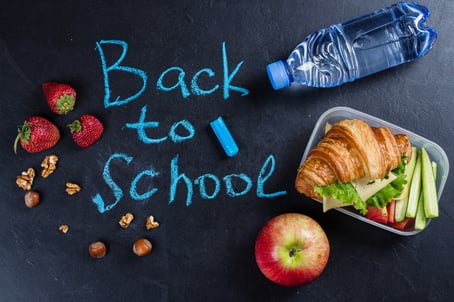 Whether you are starting your first year in college, sending your kids off to school, or are teaching classes this school year, make sure that your nutrition stays at the top of your priority list. It can be easy to get bogged down in your day-to-day routine and quickly lose sight of your goals. Follow these steps to help you stay on track this year.
Whether you are starting your first year in college, sending your kids off to school, or are teaching classes this school year, make sure that your nutrition stays at the top of your priority list. It can be easy to get bogged down in your day-to-day routine and quickly lose sight of your goals. Follow these steps to help you stay on track this year.